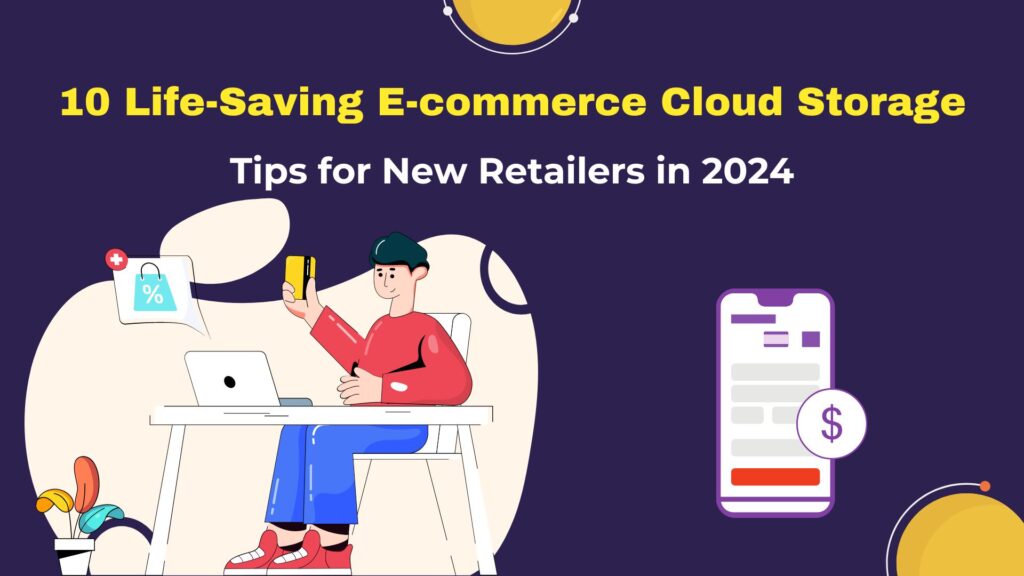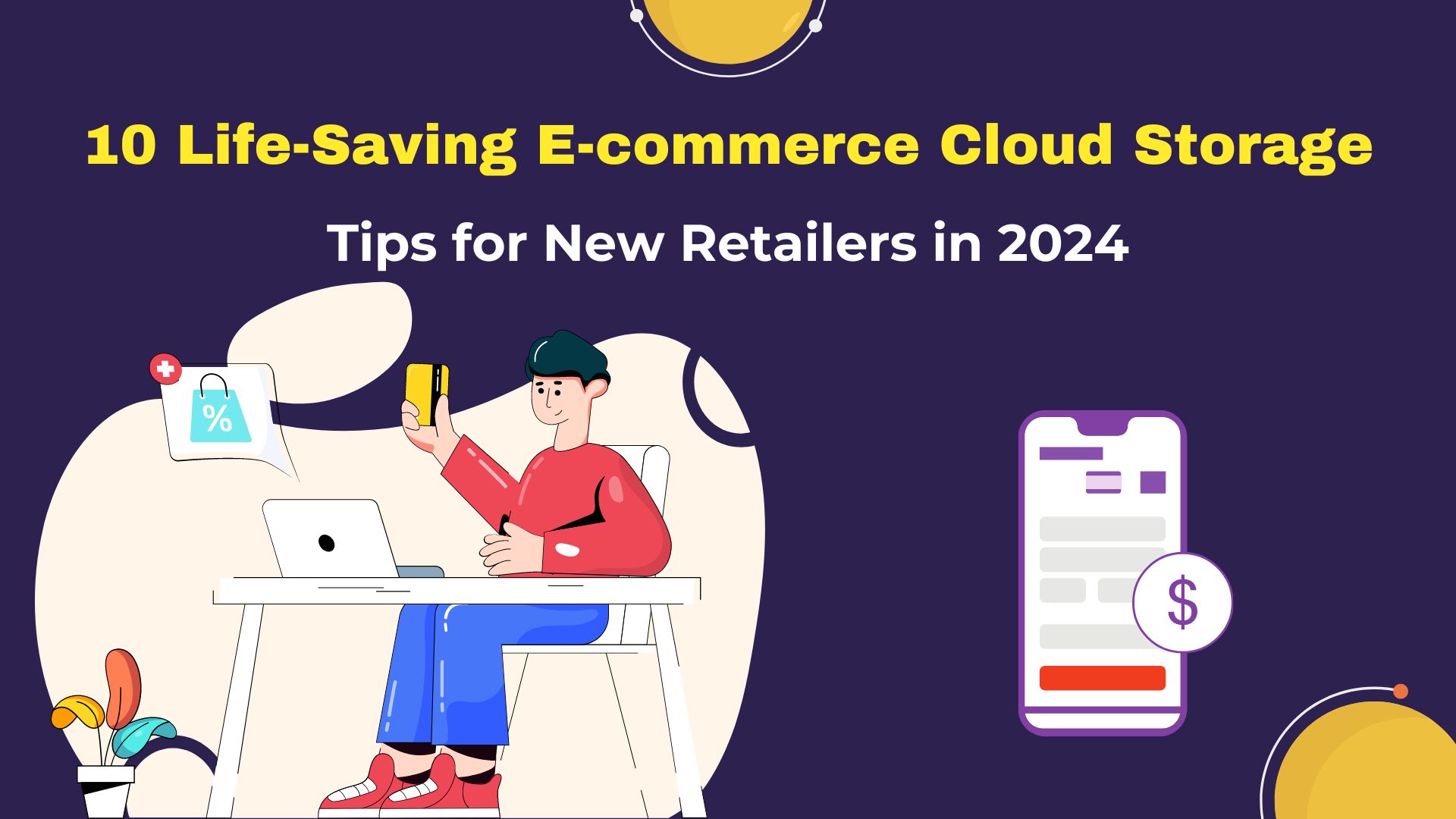In 2025, knowing the right e-commerce cloud storage tips for new retailers is more important than ever.
With the online marketplace growing every day, having a reliable and efficient cloud storage system is key to running a successful e-commerce business. For new retailers just starting out, understanding how to manage and optimize cloud storage can make all the difference between thriving and struggling to keep up.

The world of e-commerce is changing fast, with more businesses turning to cloud technology to streamline their operations, keep customers happy, and protect their data. But without the right knowledge, jumping into cloud storage can lead to expensive mistakes, security risks, and operational headaches. That’s why it’s so important to get it right from the start.
This article is here to help you with 10 life-saving E-commerce cloud storage tips for new retailers that will steer you clear of common pitfalls and help you make the most of your cloud storage investment.
Whether you’re brand new to the e-commerce world or looking to fine-tune your current setup, these tips will guide you through the ins and outs of cloud storage, making sure your business is ready for whatever comes next.
We’ll cover everything from picking the best storage solution to understanding how to keep your data safe, scale your operations, and manage costs. With these tips, you’ll be able to protect your business’s data, run things more smoothly, and grow in a competitive online market.
10 Life-Saving E-commerce Cloud Storage Tips for New Retailers!
Let’s get started with the top strategies that every new retailer needs to know to make sure their cloud storage setup is strong and ready for the future.
1. Choose the Right Cloud Storage Provider
The first step in building a successful e-commerce business is choosing the right cloud storage provider. Not all providers are the same, so picking the right one for your needs is crucial.
What to Consider When Choosing a Provider
- Reliability: Make sure the provider has a good track record of staying up and running.
- Scalability: Choose a provider that can grow with your business.
- Security: Look for strong security features to protect your data.
- Cost: Compare prices to find a solution that fits your budget.
2. Understand Your Storage Needs
Before you jump into cloud storage, it’s important to understand what your business actually needs.
How to Assess Your Data Needs
- Data Volume: Estimate how much data your business will generate.
- Types of Files: Think about the types of files you’ll be storing, like images, videos, and documents.
- Access: Figure out how often you’ll need to access your data and who will need access.
3. Make Data Security a Priority
For any e-commerce business, security is a top priority. You’re dealing with sensitive customer information, so you need to make sure your cloud storage is secure.
Key Security Practices
- Encryption: Use encryption to protect your data both while it’s being transferred and when it’s stored.
- Backups: Set up automatic backups to prevent data loss.
- Access Controls: Limit who can view or edit your data by setting up strict access controls.
- Compliance: Make sure your storage solution meets industry regulations like GDPR.
4. Optimize for Performance
How well your cloud storage performs can impact your site’s speed and the experience your customers have.
Tips for Better Performance
- Use a CDN: A Content Delivery Network (CDN) can help deliver content faster to users, no matter where they are.
- Data Caching: Implement caching to reduce load times on your site.
- Manage Bandwidth: Keep an eye on your bandwidth to avoid slowdowns.
- Scalable Infrastructure: Choose a solution that can grow with your business as demand increases.
5. Keep an Eye on Costs
Cloud storage costs can add up quickly, especially if you’re not careful. Managing your expenses is key to staying within your budget.
Ways to Manage Costs
- Pay-As-You-Go: Choose pay-as-you-go plans so you only pay for what you actually use.
- Set Alerts: Use alerts to keep track of your spending and avoid surprises.
- Optimize Storage: Regularly clean up your storage and delete files you don’t need.
- Negotiate: As your business grows, don’t hesitate to negotiate better rates with your provider.
6. Automate and Integrate
Automation and integration tools can help streamline your operations and make your life easier.
How to Use Automation
- Automatic Backups: Set up regular backups to ensure your data is always safe.
- Data Syncing: Use tools to automatically sync data across different platforms.
- Auto-Scaling: Implement auto-scaling to adjust storage resources as needed.
- Workflow Automation: Automate routine tasks like order processing to save time.
7. Plan for the Unexpected
Every business faces unexpected challenges, but having a disaster recovery plan can help you bounce back quickly.
Steps for Disaster Recovery
- Identify Key Data: Figure out which data is crucial to your business.
- Create Redundancies: Store backups in multiple locations to protect against data loss.
- Test Regularly: Make sure to test your disaster recovery plan often to ensure it works.
- Document Everything: Clearly outline the steps to recover your data and operations in case of a disaster.
8. Plan for Future Growth
As your business grows, so will your storage needs. Ensuring your cloud storage can grow with you will save you headaches later on.
Scalable Storage Options
- Elastic Storage: Choose storage that can easily scale up or down based on your needs.
- Load Balancing: Spread data across multiple servers to avoid overloads.
- Modular Systems: Opt for a modular storage setup that can expand as needed.
- Stay Future-Proof: Keep an eye on new technologies that can help you stay ahead.
9. Use Data Analytics
Data analytics can give you insights into your e-commerce operations, helping you make better decisions.
Making the Most of Data Analytics
- Track Performance: Monitor your site and storage performance to spot areas for improvement.
- Understand Customers: Use analytics to learn more about customer behavior.
- Manage Inventory: Analyze sales data to keep your inventory at the right levels.
- Forecast Trends: Use predictive analytics to anticipate future demand.
10. Review and Update Your Strategy Regularly
The final e-commerce cloud storage tip for new retailers is to regularly review and update your storage strategy. As your business grows and technology changes, your storage needs will evolve too.
Keeping Your Strategy Current
- Conduct Audits: Regularly check your storage solution to make sure it still meets your needs.
- Stay Informed: Keep up with the latest trends and updates in cloud storage.
- Adapt as Needed: Be ready to adjust your strategy as your business changes.
- Continuous Improvement: Always look for ways to make your storage setup more efficient.
E-commerce Cloud Storage Tips for New Retailers: Take Action Now!
By following these e-commerce cloud storage tips for new retailers, you’ll be setting your business up for success in 2025 and beyond. A strong cloud storage strategy will help you protect your data, run your operations smoothly, and manage your costs effectively.
Ready to elevate your e-commerce business? Start applying these cloud storage tips today and watch your online store thrive by visiting this link.










